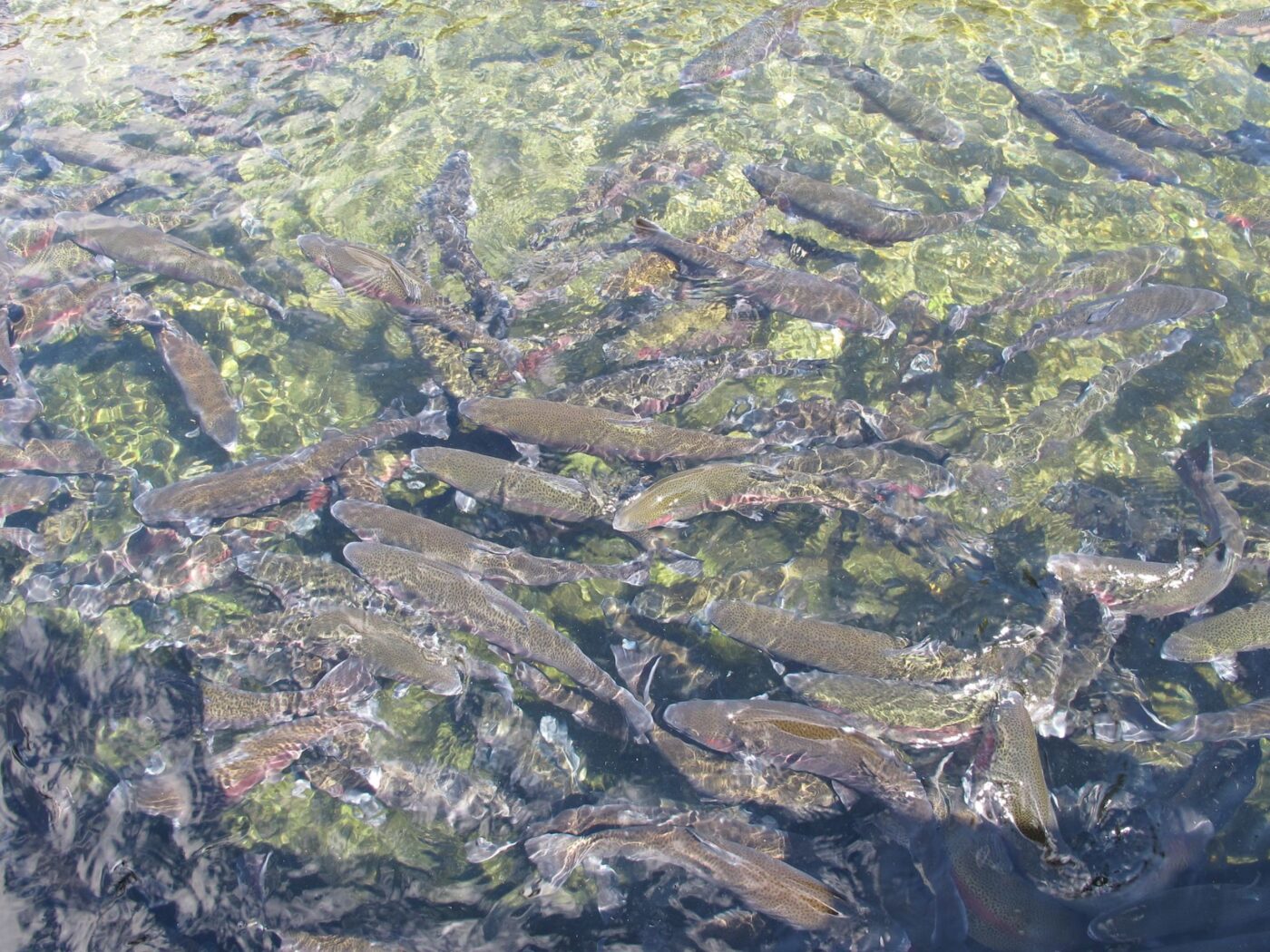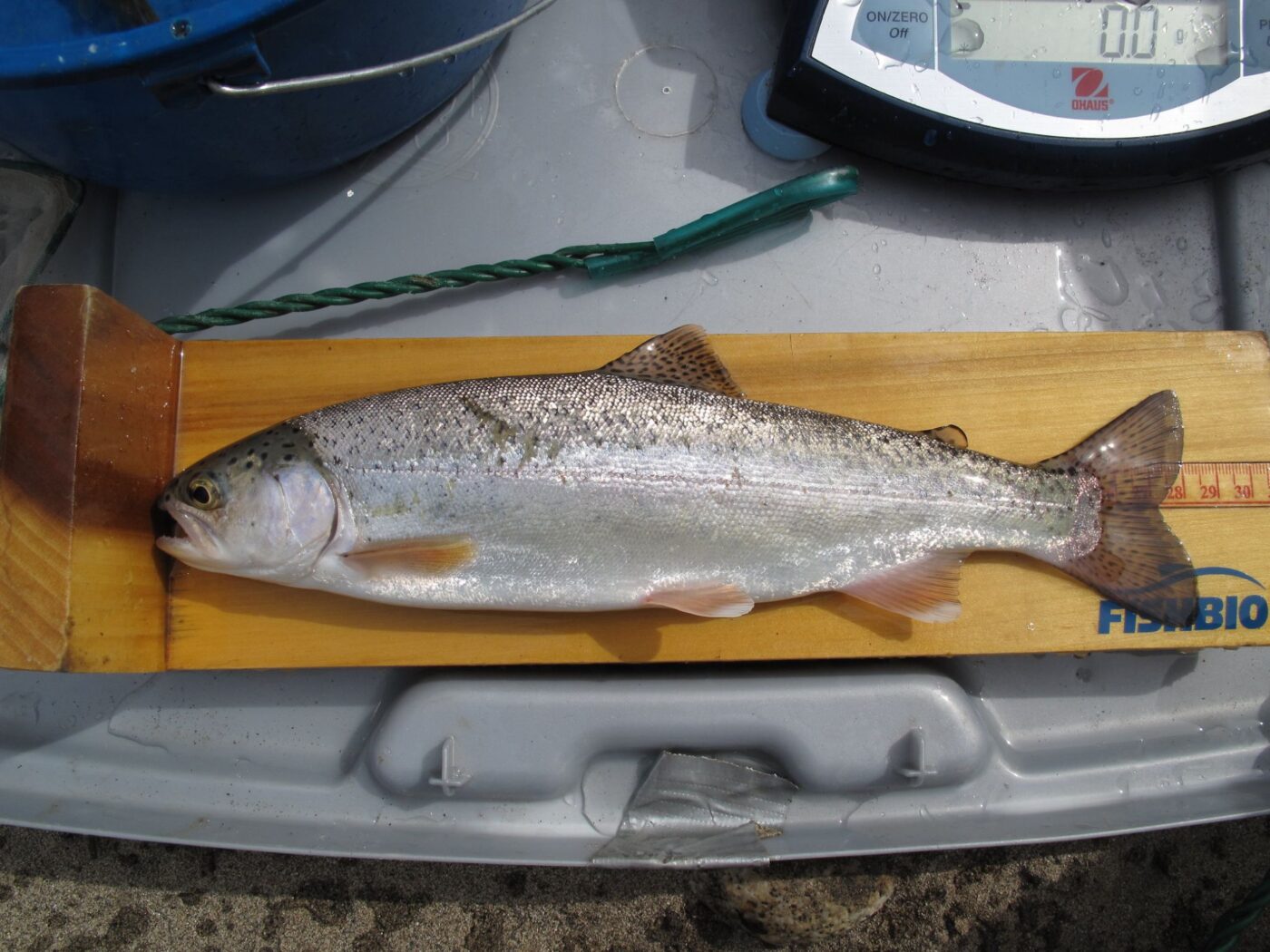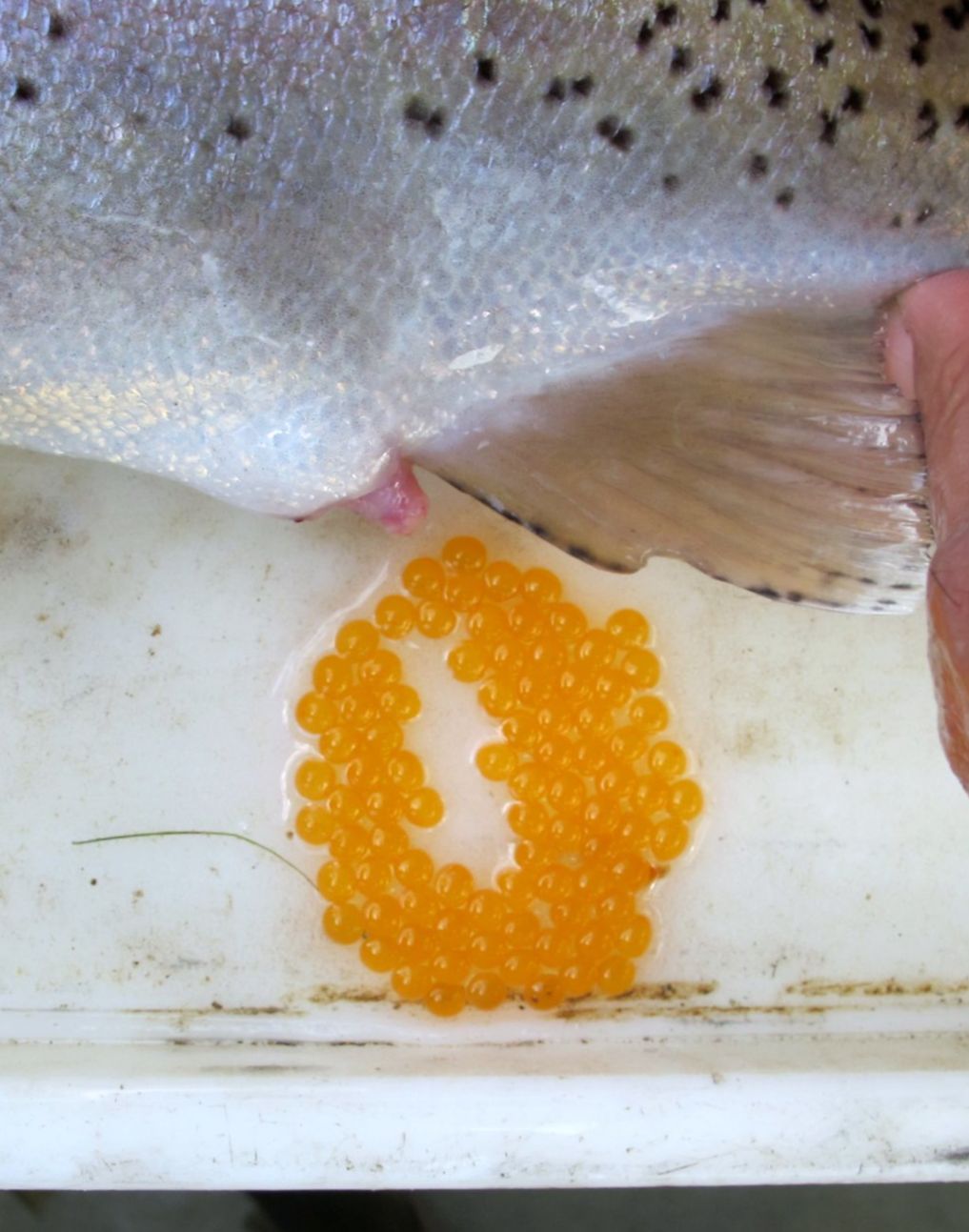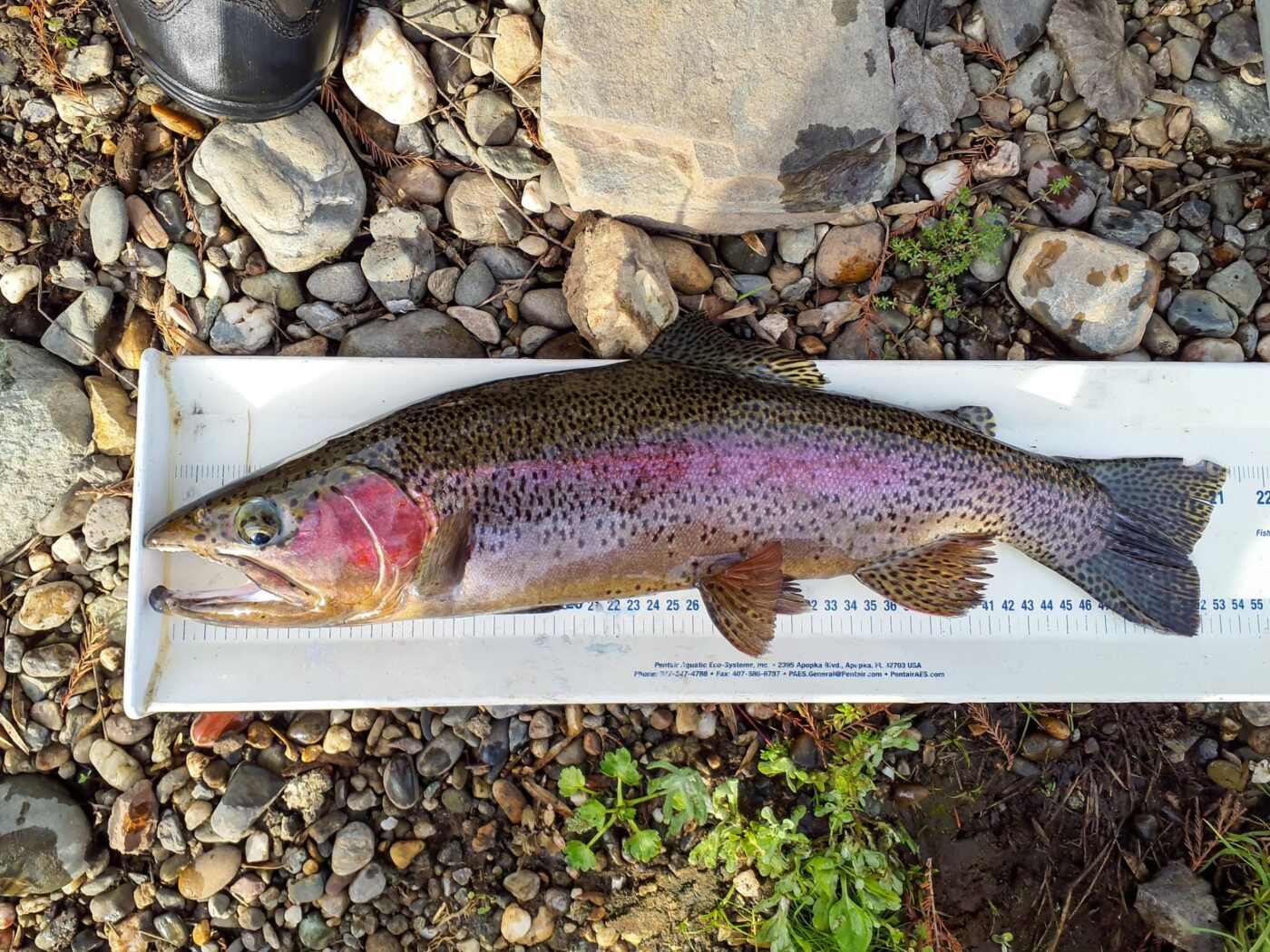Monday July 29, 2024

Part of what makes salmon and steelhead so unique is their ability to straddle two distinct worlds – the rivers where they are born and the oceans where they grow to adulthood. The factors that drive the timing of their development and migratory behavior are somewhat of a puzzle, and one that fisheries scientists are intent on solving. In particular, there is a growing interest in determining how life-history traits in steelhead – such as size, age at maturity, spawn date, and patterns of migration – are influenced by individual genes, as well as the ecological conditions a fish encounters. Steelhead (the migratory, sea-faring form of Oncorhynchus mykiss) are exceptional in their diversity and are known to have dozens of unique life-history pathways essential for their survival. In an effort to unravel the genetic roots of this diversity, a recent study published in Molecular Ecology used large-scale genetic pedigree reconstruction (tracing family relationships using genetic data) to study sex-specific patterns and the heritability of life-history traits in steelhead (Beulke et al. 2023).

Measuring a steelhead in the field.
This study aimed to expand on past research by examining critical traits for the survival and reproduction of steelhead, including age at which they mature, average body size associated with age, and migratory behavior. The primary objective was to determine if these traits are passed down directly by parents through dominant genes, or if they are shaped by a combination of multiple genes and environmental factors. To answer these questions, the researchers genetically analyzed 13,474 steelhead parent-offspring trios using advanced genomic techniques over a 14-year period at two facilities within the Russian River basin: Warm Springs Hatchery and Coyote Valley Fish Facility. By analyzing the genetic makeup of adult steelhead populations returning from the sea to these two distant tributaries of the Russian River watershed, the researchers were able to reveal patterns of inheritance that influence both spawn date and age at maturity in steelhead.

Facilities like the Nimbus Fish Hatchery raise hatchery steelhead to contribute to population numbers.
Distinct patterns of inheritance were identified in both steelhead populations included in the study. These findings were consistent with a prediction that sexes would experience opposing selection pressures. Female age and size had a strong correlation with the number, size, and survival of their offspring. While males, on the other hand, had a higher selective pressure for size at maturity which influences their reproductive success. Some key life-history traits presented clear and direct genetic inheritance patterns, while others were influenced by both genetic and environmental factors like seasonal changes, habitat availability, competition, mortality, and energetic costs.

Eggs from a steelhead are about ¼ inch in diameter.
For example, body size displayed more straightforward genetic inheritance, with specific genetic markers linked to the expressed traits. While certain genetic markers were associated with migratory tendencies, the expression of these traits also depended on environmental conditions described above. These findings highlight the important role that habitat plays in shaping the expression of migratory behavior.
Significant differences in the genetic architecture of the traits investigated in the study demonstrate that no single model of inheritance applies to all life-history traits. This complexity underscores the need for a detailed understanding of how genetic and environmental factors interact to influence the development and survival of steelhead.

A Central Valley steelhead, which is listed as threatened under the Endangered Species Act.
The study identified key genetic markers, improving the understanding of how steelhead life-history traits are inherited. This knowledge, in turn, can inform more effective conservation and management practices for the species. By uncovering the genetic basis of these traits, researchers can better predict how steelhead populations may respond to changing environments, guide efforts to protect or restore critical habitats, manage breeding programs, and ensure the long-term sustainability of steelhead populations. Notably, this study’s findings demonstrate that heritable traits can be inadvertently influenced by the selection of hatchery broodstock fish to the point where natural and sexual selection in the wild are no longer the primary drivers of evolution. The remarkable adaptability and evolutionary potential of steelhead illuminates the importance of using genetic diversity research as a tool to assist in guiding effective conservation strategies for the success of steelhead and other migratory salmonids.
Header Image Caption: O. mykiss schooling at the Bonneville Fish Hatchery.
This post was featured in our weekly e-newsletter, the Fish Report. You can subscribe to the Fish Report here.
